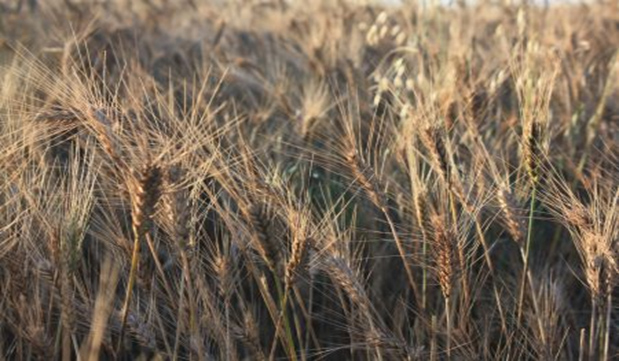March 4, 2021
Durum wheat, also known as pasta wheat, is used for the processing of pasta and other dishes like couscous and tabbouleh. Stem rust of wheat caused by the fungus Puccinia graminis f.sp. tritici is among the most damaging disease of common and durum wheat. Stem rust can cause a complete yield loss when susceptible varieties are grown under wide epidemics.
The East African highlands are known as hot spots for the emergence of new virulent races of stem rust. Many of the newly emerging races evolve with corresponding virulence to commercially deployed resistance genes and some have broad virulence spectrum. Although breeders in different parts of the world are incorporating resistance genes effective against the stem rust in their germplasm, many stem rust races continue to overcome resistance genes.
 Complete yield loss of variety ‘Digalu’ during the 2013/14 epidemic in Ethiopia caused by the emergence of race TKTTF. Reproduced from rusttracker.cimmyt.org.
Complete yield loss of variety ‘Digalu’ during the 2013/14 epidemic in Ethiopia caused by the emergence of race TKTTF. Reproduced from rusttracker.cimmyt.org.
Constant evolution of stem rust
Stem rust races are continuously evolving with new virulence to resistance genes carried by commercially grown varieties. This endangers worldwide wheat production and global food security. Our study is important in understanding the genetic baseline of resistance in the durum wheat lines, identifying sources of resistance to stem rust, and mitigating damage caused by stem rust.
In our research, we evaluated diverse durum wheat breeding lines assembled by The International Maize and Wheat Improvement Center (CIMMYT). Our findings impact both national breeding programs and farmers in Ethiopia and Kenya. Many of the durum wheat lines carried multiple-race stem rust resistance genes. These durum wheat lines can be evaluated for their performance in important agronomic traits including yield and quality. Then, lines that outperform the standard checks in a particular testing environment can be released as a variety or they can be used as parents in durum wheat resistance breeding program.
Once released as varieties, the multiple race stem rust resistant varieties mitigate the losses associated with stem rust and reduce costs related to the control of the disease. Resistance to stem rust could also be prolonged upon the future production of the multiple-race stem rust resistant varieties by the farmers in East Africa or the rest of the world that introduces durum wheat germplasm from the CIMMYT durum wheat breeding program.
Moreover, the production of multiple-race stem rust resistance varieties reduces the pathogen population in the field, the selection pressure on the pathogen and the chance of new race evolution through mutation.
Genetic Resistance vs fungicides
The use of genetic resistance to control stem rust has an advantage over fungicide spraying in terms of cost efficiency, environmental safety, and sustainability. Consequently, genetic characterization and identification of available sources of resistance in each germplasm pool is paramount for the judicious utilization of different resistance sources and subsequent deployment of gene combinations.
Working together for durum wheat against stem rust
Because stem rust and other pathogens do not respect political boundaries, it is important that research is collaborative to best serve farmers from all wheat growing regions. In that spirit, this study was conducted in collaboration with different international institutes. The CIMMYT durum wheat breeding program assembled the panel of durum wheat lines and provided seed samples for all of the field evaluation and laboratory work. Many activities were done in the laboratory, greenhouse and computer facilities of the Cornell University Small Grains Breeding Research. The Ethiopian Institute of Agricultural Research (EIAR), Debre Zeit Agricultural Research Center (DZARC) and the Kenya Agricultural and Livestock Research Organization (KALRO) collaborated for the field evaluations against bulk of multiple stem rust races prevalent in Ethiopia and Kenya. The Regional Small Grains Genotyping Laboratory in Raleigh, NC was collaborated for genotyping, data generation and designing of kompetitive allele-specific PCR (KASP) markers for screening of three known stem rust resistance genes in durum wheat.
Read the paper
Multiple-Race Stem Rust Resistance Loci Identified in Durum Wheat Using Genome-Wide Association Mapping
Megerssa Shitaye H., Ammar Karim, Acevedo Maricelis, Brown-Guedira Gina, Ward Brian, Degete Ashenafi G., Randhawa Mandeep S., Sorrells Mark E.